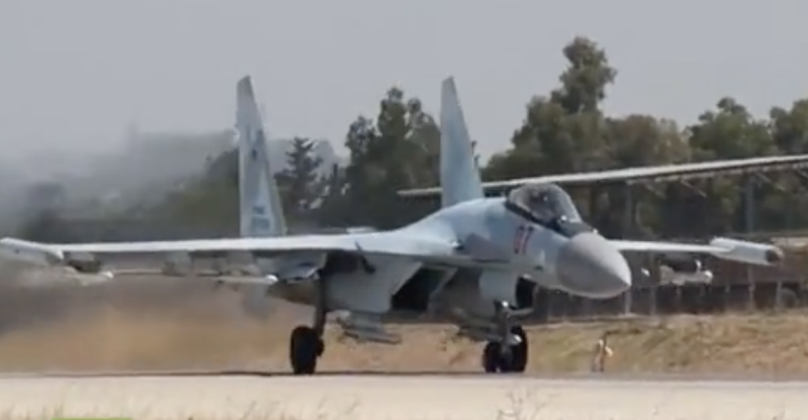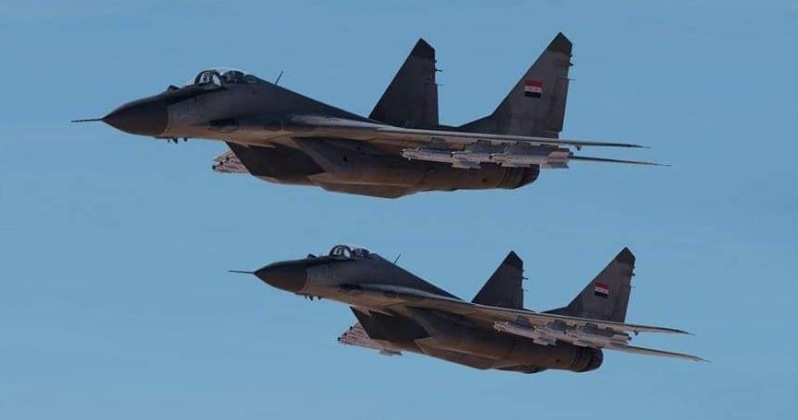News
Russia and Syria Launch Joint Air Force Drills Simulating Countering Enemy Air Strikes: Combined Ops Experience Deepened Combating Militants
The air forces of Russia and Syria on July 6 launched joint exercises simulating both air to air combat and strike missions, with the drills also intended to test the efficiency of Russia’s considerable air defence capabilities based in Western Syria. The Russian Defence Ministry elaborated that exercises trained for “issues of control of the airspace of Syria,” and that electronic warfare units were involved in preparing for joint action to counter enemy air strikes. The exercises are expected to continue into the middle of the month. Footage released by the Defence Ministry showed Su-35S air superiority fighters and both Su-24M and Su-34 strike fighters involved in the operations, with the latter two classes having been stationed in Syria since August and September 2015 to carry out the bulk of missions against Islamist insurgent groups in the country. The composition of the Syrian contingent in the exercises has not been confirmed, but the MiG-23MLD, MiG-29A and MiG-29SMT fighters that form its higher end air superiority units are all likely to participate.

Russia and Syria held their first major joint aerial warfare exercises simulating the defence of Syrian airspace in January 2022, 18 months preceding the current drills, with the Russian Defence Ministry having reported regarding these operations: “The mission’s route ran along the Golan Heights, the southern order, the Euphrates River and over northern Syria. Russian pilots took off from the Khmeimim Airbase, while Syrians took off from the Seikal and Dumayr airfields outside Damascus.” A Russian A-50 early warning and control aircraft took part in the operations. “During the patrol mission, Syrian pilots controlled airspace and provided fighter cover, while Russian crews practiced attacks on ground targets… the two countries’ pilots developed skills for cooperation in various situations. This kind of joint mission will now take place on a regular basis,” the ministry elaborated. The location of the exercises near the Golan Heights, a large part of which have been held by Israeli forces for decades, led to them being widely interpreted as a show of force aimed largely at Israel – which has frequently violated Syrian airspace to launch strikes on its territory.

Helping to enhance Syria’s indigenous aerial warfare capabilities, as well as its units’ interoperability with Russian forces, is important to gradually lifting the burden on Russian assets in the country. Insurgency in the country from 2011, as well as both the impacts of Western economic sanctions and illegal mass appropriations of Syrian oil, have been highly disruptive to the country’s prior plans to modernise its fleet and air defences. Syria remains critical to Russian interests due to both the transnational nature of many of the terrorist groups fighting the government there, which continue to receive tremendous support from neighbouring Turkey, as well as due to the strategic value of air force and naval facilities to Russia’s positions in both Africa and the Mediterranean. This has included the expansion of Khmeimim Airbase in Syria’s Latakia governate to house Tu-22M strategic bombers and MiG-31K strike fighters from 2021. Russian and Syrian forces have been conducting joint operations since 2015 primarily for counterinsurgency operations, including in recent weeks against Islamist militants operating in northwestern Syria’s Idlib governate. Militants there remain under the protection fo the Turkish Military, which has in the past strongly intervened to target Syrian forces within their own territory in order to support jihadist militias on the ground.












